

 PAT PETTETT explains how to get started in the garden.
PAT PETTETT explains how to get started in the garden.
The garden is a unique and wonderful place to have a railway – it really is worlds apart from being squirreled away in the spare room or garden shed. Natural lighting brings a variance not seen on indoor railways, and indoor layouts tend not to like the rain! This isn’t a problem with a large scale line outdoors, in fact part of the fun is seeing how well things run in conditions that vary considerably. G scale will quite happily run in the rain, even snow – all that is needed is the top layer of snow scraping off the top of the rails to ensure power can reach the loco pickups. It offers wonderful opportunities for photography with the ever changing conditions.
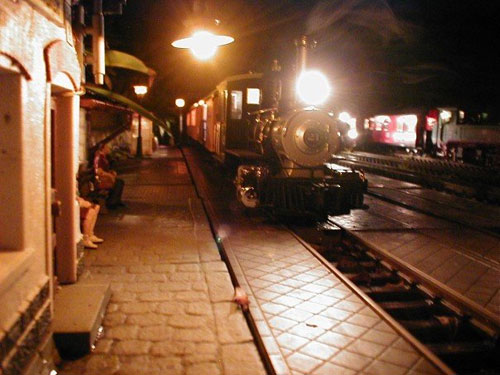
Naturally a garden line requires a different type of maintenance than an indoor table top railway but this is not a problem – garden lines are typically simpler than their indoor counterparts so there will usually be less pointwork to worry about.
But how do we start off?
As with the smaller scales, a Starter Set is usually the way to go. Even if you have grand plans for an outdoor line, the vast majority of the goods you get in a starter set can be used for years to come and they are a very cost effective way to get going, as you get control equipment, locomotive, rolling stock and track all in one.
My own line started this way – working in a model shop soon gets you developing an interest in subjects that you never thought could be of interest. Before joining Gaugemaster I was a OO scale, British outline modeller, with an interest in the “blue” period of British Rail. I slowly began to like the German and American models, and purely as a novelty to go around the Christmas tree one year I bought an LGB starter set – this was the basic passenger set with a loco and two four-wheeled coaches. Being a British diesel nut I never imagined having an Austrian tank loco!
I was immediately impressed with the running qualities – G scale locos tend to be very smooth and quiet, and very controllable. In terms of size, they have a real sense of presence – even a small 0-4-0 tank loco is impossible to miss. It wasn’t long before I bought a few feet of straight track... At this point moving into the garden wasn’t something I was considering – I was living with my father, and the garden was very much his domain! The bedroom I had was pretty spacious though, and the space around the edges of the room was being used for anything. Pulling some of the furniture away from the walls gave me the six inches or so needed for a train to clear the furniture. I bought a few more straights, and one of the station extension packs, so I had a couple of points to liven things up, and to store a spare train!
When my father went on holiday, I had a couple of weeks where the patio was free – so of course I took advantage! This was a simple squared oval like the one below:
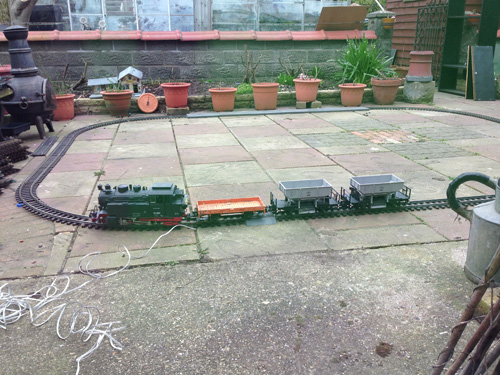
As well as being rather good fun, this is also important in the longer term – A garden you have always considered to be flat can turn out to be anything but! Having a time where you have the track laid down in a basic fashion like this is important, as it will teach you a lot of things you had not considered before:
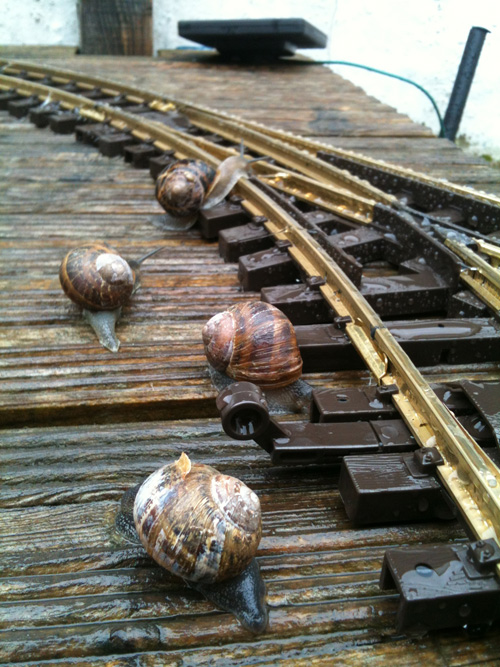
Whilst my line will eventually be moved off the patio to run around a yet to be built lawn, it has happily continued as a patio line – the simple oval turned into a single track loop, but with three passing loops in a station area, with two sidings and a headshunt – the headshunt means I can assemble freight trains in the sidings without affecting anything running round the main loop.
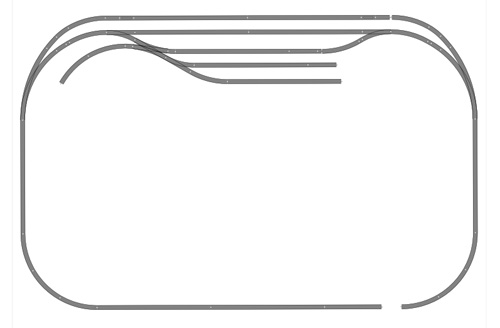
Track used on my line is a mixture of LGB and Piko – the rail profile of both makes is identical, so you can mix and match happily. The curved points shown on the plan above are from Piko, without them the main loops in the station area would be a good two feet shorter.
You can also experiment with basic scenic ideas at this stage too – most gardens have a few odds and ends lying around that can be used to test ideas out and get an impression of how much space you will need. Being a patio line, I cannot have “proper” bridges and tunnels at this stage, as everything needs to be moveable. However a couple of spare wall bricks and a sheet of metal grille have served as a basic tunnel, seen here back right:
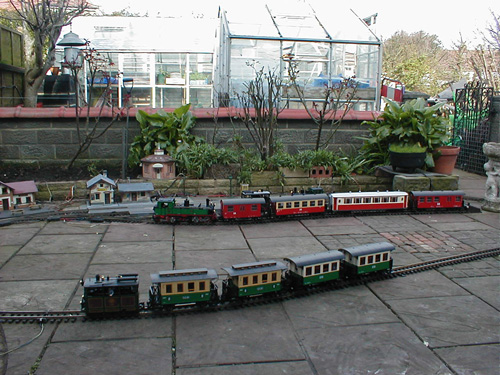
More spare bricks can be seen holding up the plants in the station – it is important to consider growth of plants!
The line never did get removed from the patio! Instead it has grown, taking up the edge of the patio where it is not too in the way – however anyone hanging washing out has to stand on the station area but G scale track is robust enough to cope with foot traffic quite happily...
If you decide on a more permanent line, you need to consider where it will go – will it be ground level running through the flower beds? Or will it be raised above the ground?
Ground level lines tend to blend in with the garden better, but a high level line will be easier to cope with if you are of advancing years...
I will cover this in the next article!
CLICK HERE to browse our full G Scale Range of Starter Sets.
CLICK HERE to browse our full G Scale Range of Figures.
We will have to get on to John at Deluxe Materials to see if Track Magic can clean snails off the track...